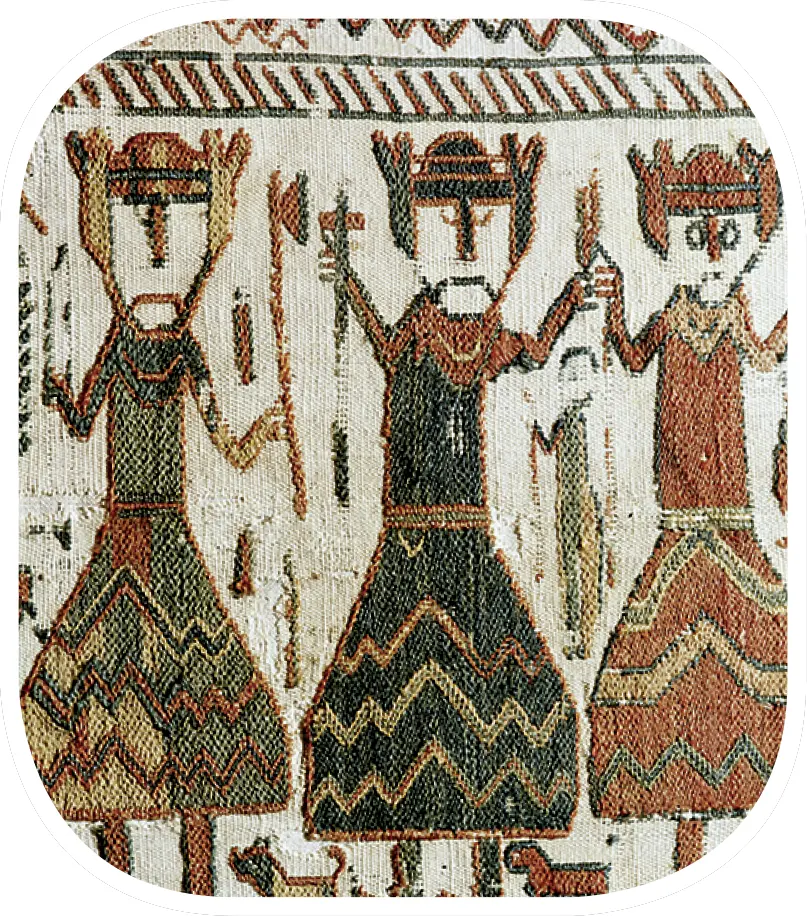Christina Balit - Treasury of Norse Mythology - Stories of Intrigue, Trickery, Love, and Revenge
Здесь есть возможность читать онлайн «Christina Balit - Treasury of Norse Mythology - Stories of Intrigue, Trickery, Love, and Revenge» — ознакомительный отрывок электронной книги совершенно бесплатно, а после прочтения отрывка купить полную версию. В некоторых случаях можно слушать аудио, скачать через торрент в формате fb2 и присутствует краткое содержание. Жанр: unrecognised, на английском языке. Описание произведения, (предисловие) а так же отзывы посетителей доступны на портале библиотеки ЛибКат.
- Название:Treasury of Norse Mythology: Stories of Intrigue, Trickery, Love, and Revenge
- Автор:
- Жанр:
- Год:неизвестен
- ISBN:нет данных
- Рейтинг книги:4 / 5. Голосов: 1
-
Избранное:Добавить в избранное
- Отзывы:
-
Ваша оценка:
- 80
- 1
- 2
- 3
- 4
- 5
Treasury of Norse Mythology: Stories of Intrigue, Trickery, Love, and Revenge: краткое содержание, описание и аннотация
Предлагаем к чтению аннотацию, описание, краткое содержание или предисловие (зависит от того, что написал сам автор книги «Treasury of Norse Mythology: Stories of Intrigue, Trickery, Love, and Revenge»). Если вы не нашли необходимую информацию о книге — напишите в комментариях, мы постараемся отыскать её.
Treasury of Norse Mythology: Stories of Intrigue, Trickery, Love, and Revenge — читать онлайн ознакомительный отрывок
Ниже представлен текст книги, разбитый по страницам. Система сохранения места последней прочитанной страницы, позволяет с удобством читать онлайн бесплатно книгу «Treasury of Norse Mythology: Stories of Intrigue, Trickery, Love, and Revenge», без необходимости каждый раз заново искать на чём Вы остановились. Поставьте закладку, и сможете в любой момент перейти на страницу, на которой закончили чтение.
Интервал:
Закладка:
And there were many corpses to feed on, for humans were more fragile than gods. On the third and lowest level of the cosmos was the realm of the dead. It took nine days to ride northward and downward from Midgard to get there. It was the deep and frozen northern land of Niflheim. A hateful monster presided there, all pink down to her hips and then greenish black and decayed from hip to toes, with a huge, bloody-muzzled dog, Garm, baying at her side. She went by the name Hel, and many called her realm by her name. In those days, to die was to go to Hel.
Beyond these six worlds, there were three more, whose locations are murky, as is that of Vanaheim. Fire giants dwelled in the smoky landscape Muspell. Dwarfs had the mountain caves in the land called Nidavellir. Near them was Svartalfheim, the land of the dark elves. They were crabby, mysterious beings, as different from the light elves as the moon is from the sun.
Rising up through the center of it all was a mighty ash tree called Yggdrasil. Its branches shaded all the nine worlds, and it dripped a sugary dew that swarms of bees made honey from—the very first honeydew. Three gigantic roots held it up, one that went through low Niflheim, one that went through Jotunheim on the middle level, and one that went through the highest land, Asgard. Gnawing at the cold root in Niflheim was the dragon Nidhogg. The squirrel known as Ratatosk ran up and down Yggdrasil, carrying words of envy and insult between the dragon below and the eagle that circled its talons around the tree’s limbs. Four stags leaped through the highest boughs, nibbling at the leaves. And a goat called Heidrun chewed on its tender shoots. Yggdrasil groaned in agony, yet stood tall with nobility. It was the noblest of trees. It looked out over everything, and the knowledge of the worlds seeped into it.
The ash tree Yggdrasil rose in the middle level of the cosmos, but it stretched its roots down to the bottom level and its branches up into the top level, making a whole that would stand strong only so long as the tree stood strong.
All the animals romping and feeding on Yggdrasil seem ordinary except for the dragon Nidhogg. Serpentine dragons slither through the Norse myths, embodiments of the lurking dangers of the natural world.
With all this abuse, surely the magnificent tree would have withered but for the efforts of three Norns. Norns were giantesses who ruled the destinies of humans. There were many of them, some malevolent, some beneficent. They were the ones responsible for one man’s son dying of illness and another’s surviving that same illness, for one woman perishing in her first childbirth and another producing a dozen offspring and still planting and plowing with strength. They were present at the birth of every child and no one could escape the fate they assigned. Whenever anything strange happened, anything weird, everyone knew it was the work of the Norns. Three of these Norns, lovely maidens all, took to caring for Yggdrasil. One was Urd—Fate. One was Verdandi—Being. One was Skuld—Necessity. They watered Yggdrasil daily with the purest water from the sacred spring of destiny, and they whitened the bark with clay from that very spring, to make it shine as clean and new as the lining of an eggshell and to protect it from rot and decay.
Three special Norns tended Yggdrasil. They gave the tree water from a sacred spring and coated its bark with that spring’s clay to keep it from decaying with age.
Yggdrasil served every kind of creature in every world of the cosmos. This most central tree made a whole of the cosmos, and so it was the most sacred place of all. Everyone knew that when Yggdrasil finally would shake, everyone would curl in fear, for the end of everything as we know it would be at hand. Indeed, that may be why the hideous dragon Nidhogg tormented the tree—to put an end to what otherwise would be eternal. In the meantime, though, just the sight of Yggdrasil calmed the most frantic heart.
The Aesir mistreated the old witch Gullveig, who lived with the Vanir. In revenge, the Vanir prepared to attack. But the Aesir made a preemptive attack. The bloody battle went on for eons.
THE GODS CLASH

The two groups of gods living in the cosmos didn’t trust each other much. Rather, they were wary to the extreme. One day a witch named Gullveig, who lived with the Vanir in Vanaheim, visited the Aesir, living in Asgard. No one’s really sure why, but Gullveig walked into Odin’s hall and blathered about gold, about how it glistened and how much she loved it. The Aesir listened with growing disdain and finally did the unforgivable: They jammed spears into her everywhere. Then they tossed her into a fire and burned her to death. All she had done was annoy them with her incessant talk, and just look what they did to her!
But Gullveig stepped right back out of the flames, alive and whole. A second time they threw her in, and a second time she stepped back out. And yet a third time. By that point the astonished Aesir realized this witch had powers beyond anything they’d dreamed of, so they moved aside and let her wander wherever she wished in the halls of Asgard. Troublemakers followed her; the more wicked the followers, the more they admired Gullveig. Word got back to the Vanir of how dreadfully the Aesir had treated Gullveig. Vengeance seemed a duty; they prepared for war.
From his high seat in Valaskjalf, Odin saw what was happening over in Vanaheim. He saw them sharpening spearheads and polishing shields. So, he prepared a preemptive strike, and the Aesir cast the first spear. But the Vanir were already surging forward on their mounts, trampling the fields between the two worlds.
Berserkers

Odin, Thor, and Frey on a Viking tapestry
In the Icelandic sagas Odin’s warriors put on animal fur coverings. Wolf fur let them fight with trickery. Bear fur let them wrestle with strength. Their fighting bordered on insanity; they went berserk (ber was the Old Norse word for “bear”). The Vikings, likewise, were known for their ferocious frenzy in battle. These “berserkers” terrorized much of northern Europe in the late 700s until the early 900s, but their more mild Norse compatriots settled peacefully throughout the same area.
The battle went on and on. That’s how battles between gods are. Both sides are immensely powerful, after all. But the longer the battle endured, the clearer it became to all that a victor was unlikely. The gods wearied of the futility of this dreary war. Finally, the leaders of the Vanir and the Aesir sat down to hash things out. They couldn’t agree on almost anything, but they wanted so much just to end that plague of war that they drew up a truce. And to show their sincerity, they exchanged hostages: Two from each group would go to live with the other group.
The Vanir sent the very wealthy god Njord and his son Frey to Asgard. Frey’s twin sister, Freyja, and Kvasir, the wisest Vanir, accompanied those two on their journey and ended up staying there. The Aesir welcomed them honorably. Njord and Frey were appointed high priests to preside over sacrifices. Freyja became a sacrificial priestess, and she taught the gods all the spiritual, medical, and magical knowledge that she had, which was considerable.
The Aesir, for their part, sent Hoenir and Mimir to Vanaheim. Hoenir was strong and big; he certainly looked like he’d make a fine leader. And Mimir, though he was a giant, was considered the wisest Aesir—definitely comparable to Kvasir. All seemed good to the Vanir. They put Hoenir in a position of power and Mimir stood to his right and advised him. Together they made shrewd decisions. But if Mimir left Hoenir’s side, the tall and handsome Hoenir turned silent. When asked a question, he refused to speak. The Vanir felt cheated. In fury, they cut off Mimir’s head and sent it back to Odin.
Читать дальшеИнтервал:
Закладка:
Похожие книги на «Treasury of Norse Mythology: Stories of Intrigue, Trickery, Love, and Revenge»
Представляем Вашему вниманию похожие книги на «Treasury of Norse Mythology: Stories of Intrigue, Trickery, Love, and Revenge» списком для выбора. Мы отобрали схожую по названию и смыслу литературу в надежде предоставить читателям больше вариантов отыскать новые, интересные, ещё непрочитанные произведения.
Обсуждение, отзывы о книге «Treasury of Norse Mythology: Stories of Intrigue, Trickery, Love, and Revenge» и просто собственные мнения читателей. Оставьте ваши комментарии, напишите, что Вы думаете о произведении, его смысле или главных героях. Укажите что конкретно понравилось, а что нет, и почему Вы так считаете.












